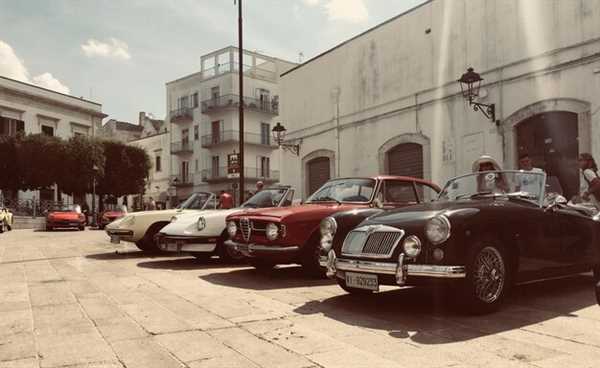
For enthusiasts interested in high-performance vehicles, an understanding of their progression is invaluable. The journey of these machines provides insights into technological advancements and shifting design philosophies. From early models that defined speed to contemporary marvels integrating cutting-edge innovations, each era has contributed uniquely to this category.
Examining influential manufacturers reveals distinct milestones. The iconic designs of the 1960s and 1970s, characterized by bold lines and raw power, gradually transitioned into the more refined, aerodynamically optimized profiles seen in the 1990s and 2000s. This shift not only enhanced performance metrics but also improved safety and efficiency, setting new standards within the marketplace.
Highlighting specific examples, the introduction of turbocharging and hybrid technology in recent years has further pushed boundaries. Models from this category have become showcases of engineering creativity, melding environmental considerations with exhilarating performance. Each iteration reflects a narrative filled with passion, competition, and a relentless pursuit of excellence.
Key Technological Innovations in Italian Supercars from the 1960s to 2020s

Incorporating lightweight materials like aluminum and carbon fiber began in the 1960s, optimizing weight-to-power ratios significantly. The introduction of rear-engine designs set a new precedent, as seen in models like the Lamborghini Miura, enhancing handling dynamics.
The 1970s brought advancements with turbocharging, leading to greater performance outputs. Innovations in aerodynamics, particularly with the Ferrari 512S, showcased how shapes could be optimized for reduced drag.
By the 1980s and 1990s, electronic fuel injection systems improved efficiency and responsiveness. The usage of active suspension systems enhanced ride comfort and cornering ability, exemplified by the Ferrari F40. All-wheel-drive technology emerged, pushing boundaries of traction and control.
The early 2000s witnessed the rise of hybrid systems, blending electric power with traditional engines for improved performance and reduced emissions, as showcased in the Ferrari LaFerrari. Advanced telemetry systems introduced real-time performance data to drivers, bridging the gap between track and road.
In the 2010s and 2020s, adaptive aerodynamics and electric propulsion became prominent. Models like the Lamborghini Terzo Millennio explored fully electric configurations, while further integration of artificial intelligence in vehicle systems provided enhanced driving experiences and safety features.
Iconic Italian Supercar Models and Their Impact on Automotive Design
The Lamborghini Miura, introduced in the late 1960s, redefined sports car architecture with its mid-engine layout, influencing countless designs thereafter. Its blend of performance and aesthetics set a benchmark that many manufacturers aimed to achieve.
The Ferrari F40, a product of the late 1980s, showcased a raw, aggressive design that highlighted its racing pedigree. This model emphasized aerodynamics and lightweight materials, paving the way for future designs focusing on performance without compromising style.
In the mid-2000s, the Pagani Zonda emerged, with its exquisite craftsmanship and unique use of materials. This model demonstrated how art and engineering could coexist, inspiring luxury manufacturers to incorporate more bespoke elements into their offerings.
Moreover, the Alfa Romeo 4C, launched in the 2010s, emphasized simplicity and lightweight design, proving that efficiency in engineering could also lead to striking aesthetics. Its influence resonated through the compact sports car segment, encouraging a return to driver-focused designs.
As a whole, these remarkable creations have continually shaped standards in automotive engineering, urging brands to explore innovative approaches to both form and function.
The Role of Motorsport in Shaping Italian Supercar Performance

Motorsport serves as a vital testing ground for automotive brands, influencing the design and engineering of high-performance vehicles. Participation in races provides invaluable insights that drive innovations in aerodynamics, powertrains, and handling. For instance, the introduction of active aerodynamics in models can be traced back to lessons learned in competitive racing environments.
Collaborations between racing teams and manufacturers result in advanced technologies, such as lightweight materials and energy-efficient engines. Iconic names like Ferrari and Lamborghini have honed their craft in endurance competitions, translating race-proven technologies into street-legal creations. These partnerships foster a feedback loop where track performance directly informs improvements in consumer models.
Technological advancements derived from the rigors of motorsport translate into real-world performance, enhancing not only speed but also reliability and driver engagement. A prime example is the integration of electronically controlled suspension systems, which have roots in racing setups, allowing for superior handling capabilities on both the track and the road.
Moreover, racing success contributes to brand prestige, attracting a dedicated following and bolstering sales. This link between competitive achievement and consumer appeal ensures that innovation in racing extends its impact beyond just the circuits. Continuous involvement in motorsport cultivates a culture of excellence and drives sustained development within automotive brands.
Thus, the influence of competitive driving aligns closely with the performance characteristics and advancements of modern vehicles, reflecting a legacy that continues to thrive through passion for speed and engineering prowess.


